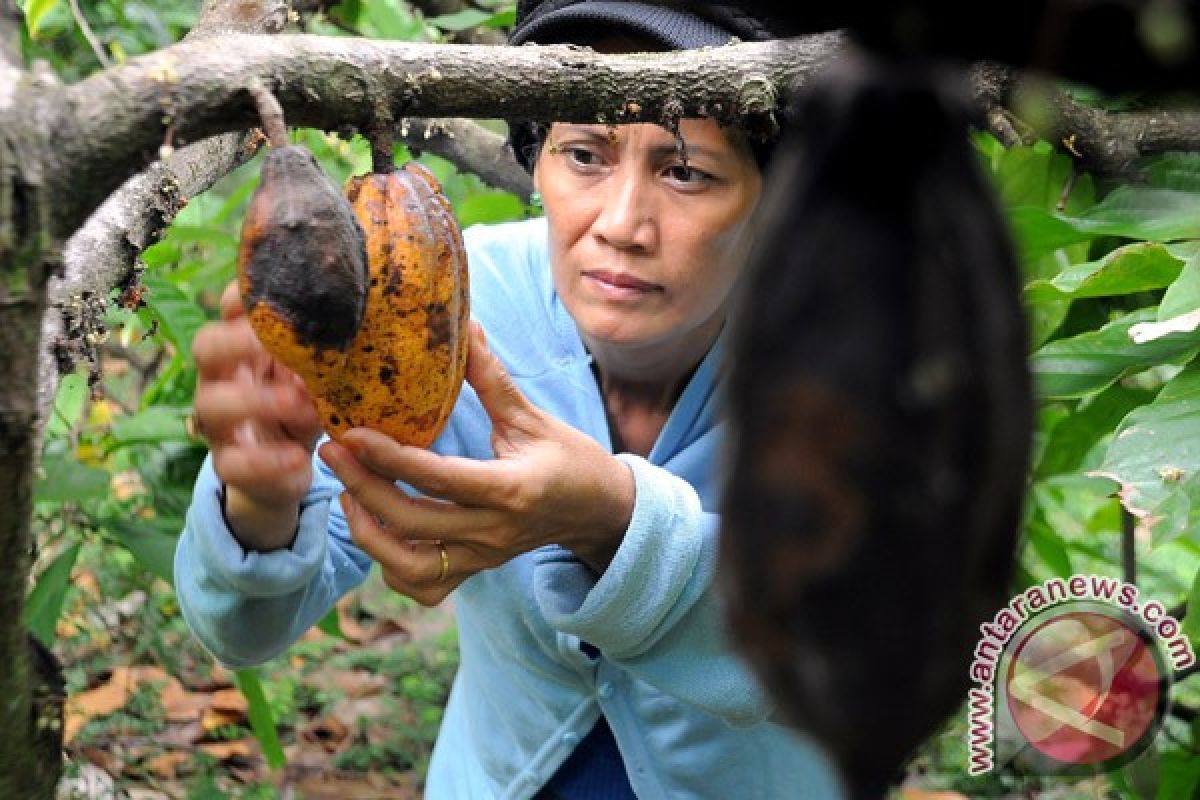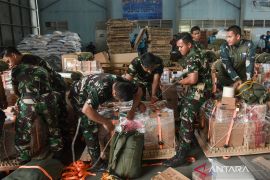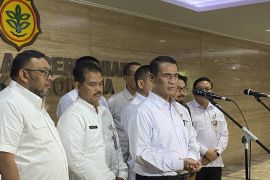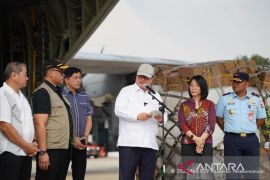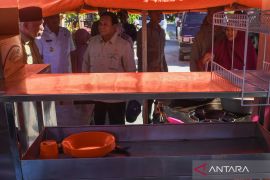According to the Office of the Central Statistics Agency (BPS) in Central Sulawesi, cocoa bean exports were recorded at 45,200 tons and worth US$126.6 million in 2011, compared to 109,510 tons worth US$297.37 million one year earlier.
Head of the Office, Ibram Syahboedin, said the plunge in cocoa bean exports was the result of an insect infestation, plants becoming diseased by pathogenic organisms, and extreme weather.
In fact, hopeless cocoa growers in a number of areas let their cocoa plants grow without producing fruits. They claimed they had used a variety of insect repellents and fertilizers, but to no avail.
It is the plant disease vascular streak dieback (VSD) that haunts cocoa growers. The fungus attacks the stems of cocoa plants, causing the fruits to rot.
Because of the VSD attack, some cocoa growers have switched to planting other crops, such as vegetables and fruits.
On average, every hectare of cocoa crops, which are made up of 900 to 1,000 trees in Central Sulawesi, has produced 200 kg during the past few years, falling short of the normal production of 300 kg to 350 kg.
Head of the Parigi Moutong District Forestry and Plantation Service Mukramin said his agency has been trying to solve the problems faced by cocoa growers in the largest cocoa-producing district in Central Sulawesi by, among other options, applying the so-called side-cleft-grafting technique.
Side-cleft-grafting is the method of joining an old plant to the stem of a new type of more productive cocoa plant. The result of the method is only seen after the plant has reached two years old. After bearing fruits, the main trunk of the joined plant is cut.
To date, 11,000 hectares of cocoa plantations in Central Sulawesi have been targeted for the National Cocoa Revitalization Movement (Gernas), which has cost the government more than Rp60 billion.
In Parigi Moutong alone, the program seeks to reinvigorate 3,500 hectares, out of 65,000 hectares of cocoa plantations in the district.
Mukramin said most cocoa plants in Parigi Moutong and the rest of Central Sulawesi are about 20 years old, so their productivity continues to fall.
Cocoa plantations in Parigi Moutong cover an area of 65,000 hectares in 22 sub-districts. About 39,000 families earn their livelihoods as cocoa growers.
The area of the cocoa plantations represent more than one-fourth of the overall cocoa plantations in Central Sulawesi, which covers 221,000 hectares throughout 10 districts and one municipality.
Cocoa is Central Sulawesi`s key commodity, much of which is exported to the United States, the Netherlands, Malaysia and Singapore.
To increase productivity, local cocoa growers are in dire need of more farm advisers. So far, cocoa growers have asked for help from a lecturer at Palu-based Tadulako University (Untad), Muslim, to solve cocoa-related problems.
Thomas said cocoa growers encounter many problems, causing their cocoa production to continuously drop during the past two years.
Most of these farmers only know how to plant, harvest and sell cocoa. "So if they have problems with cocoa plants, they will get confused and let the plants die. Therefore, we need more counselors who are ready to help farmers any time," he said.
Ideally, each village should have one counselor, according to the decision of the local governments, he said.
Mukramin said he has instructed his subordinates to send counselors to the field. "We already have a list of counselors, including the names of villages where they are assigned. If any of them do not work according to the schedule, let us know about that counselor immediately," he said.
The cocoa growers also have difficulties obtaining bank loans because they do not have land deeds as collateral, he noted.
"How could banks trust them to extend credits if they have no collateral?" he asked.
Only 11,000 of 65,000 hectares of cocoa plantations in Parigi Moutong have land deeds.
Mukramin has asked local cocoa growers to register their land with the local office of the National Land Agency (BPN) so they could receive land deeds.
Further, he asked banks not to hesitate to channel loans to cocoa growers who already hold land deeds. The loans can be repaid by installments based upon the harvest times. "So the installments are not made every month, but every semester, according to the harvest time," he said.
He added that cocoa growers cannot afford to repay the loans by monthly installments because they only have enough money to fulfill their daily needs.
He also fears that a lack of access to bank loans might disrupt cocoa output.
Because of funding difficulties, cocoa growers cannot cultivate cocoa using the newest methods, he said.
Citing an example, he said the cost of the side-cleft-grafting method applied to a hectare of cocoa plantation costs Rp5 million.
Muslimin further said that cocoa growers are expected to export a container of 30 tons of fermented cocoa as a special gift when Central Sulawesi marks its 48th anniversary this year.
So far, local growers have only exported dried or raw cocoa beans.
It takes two days to dehydrate raw cocoa beans, while the cocoa fermentation process needs five days.
This is one of the reasons why local growers are reluctant to ferment raw cocoa beans, because they need money more quickly, he said, and only by selling raw cocoa beans can they quickly earn money to meet their daily needs.
Abdul Aziz, spokesman of Cahaya Tani farmers group at Lumbu Marmara village, Donggala district, said the group has gradually produced enough fermented cocoa to meet the demand in the international market.
Therefore, he expected the special gift would motivate cocoa growers to increase their production.
The special gift is also meant to encourage local authorities to pay more attention to cocoa, which has made Central Sulawesi famous.
(T.R026/S012/INE/S012)
Reporter: by Riski Maruto and Suharto
Editor: Priyambodo RH
Copyright © ANTARA 2012
